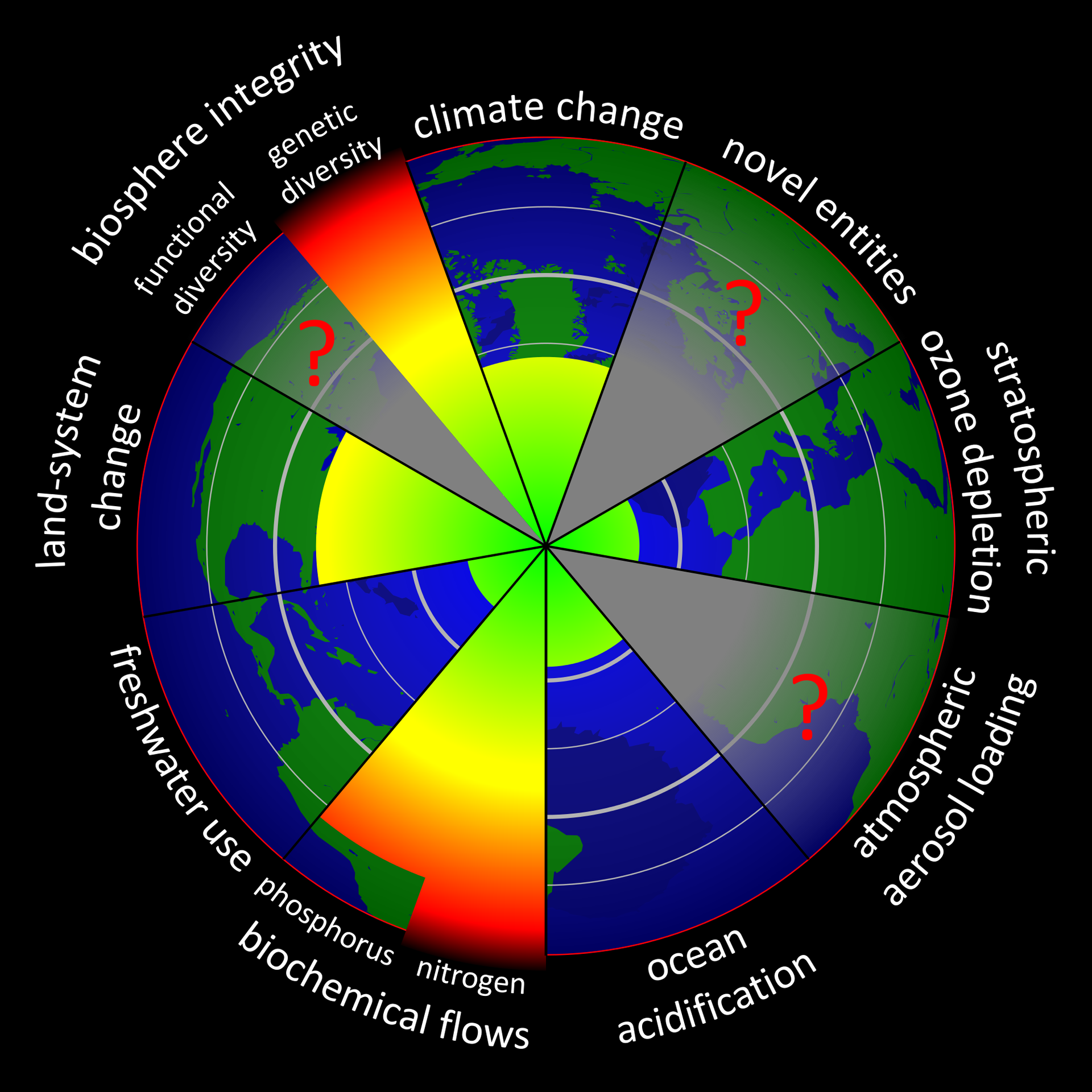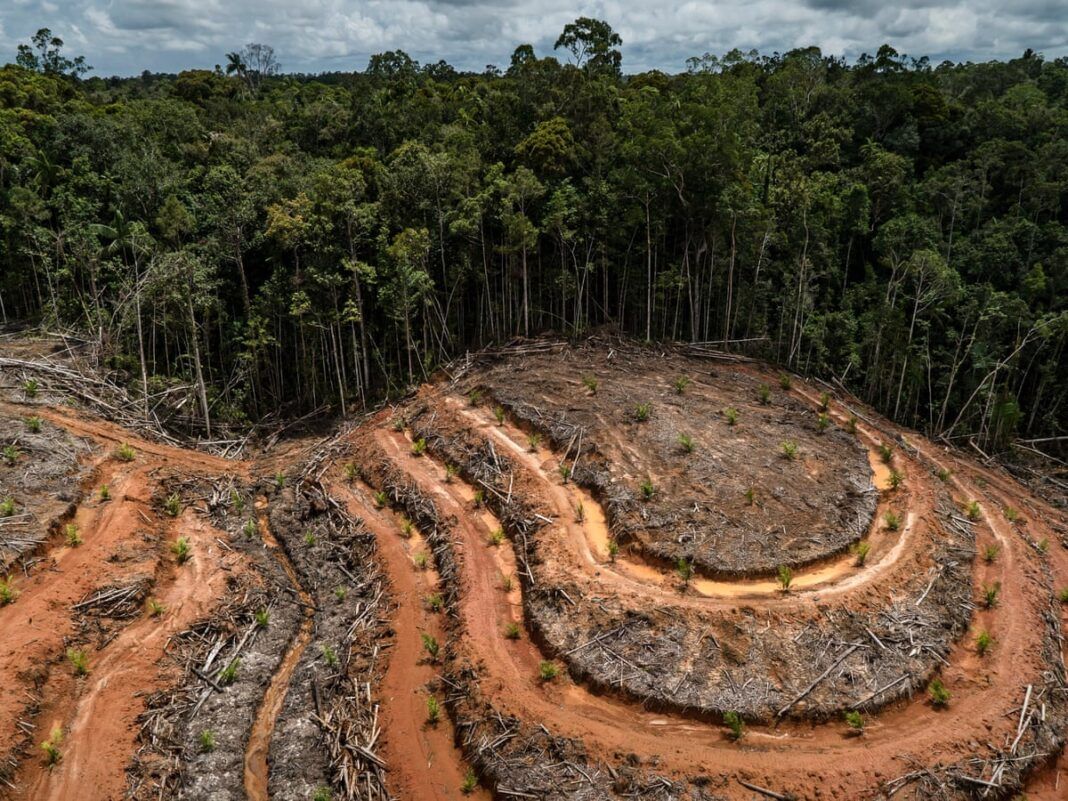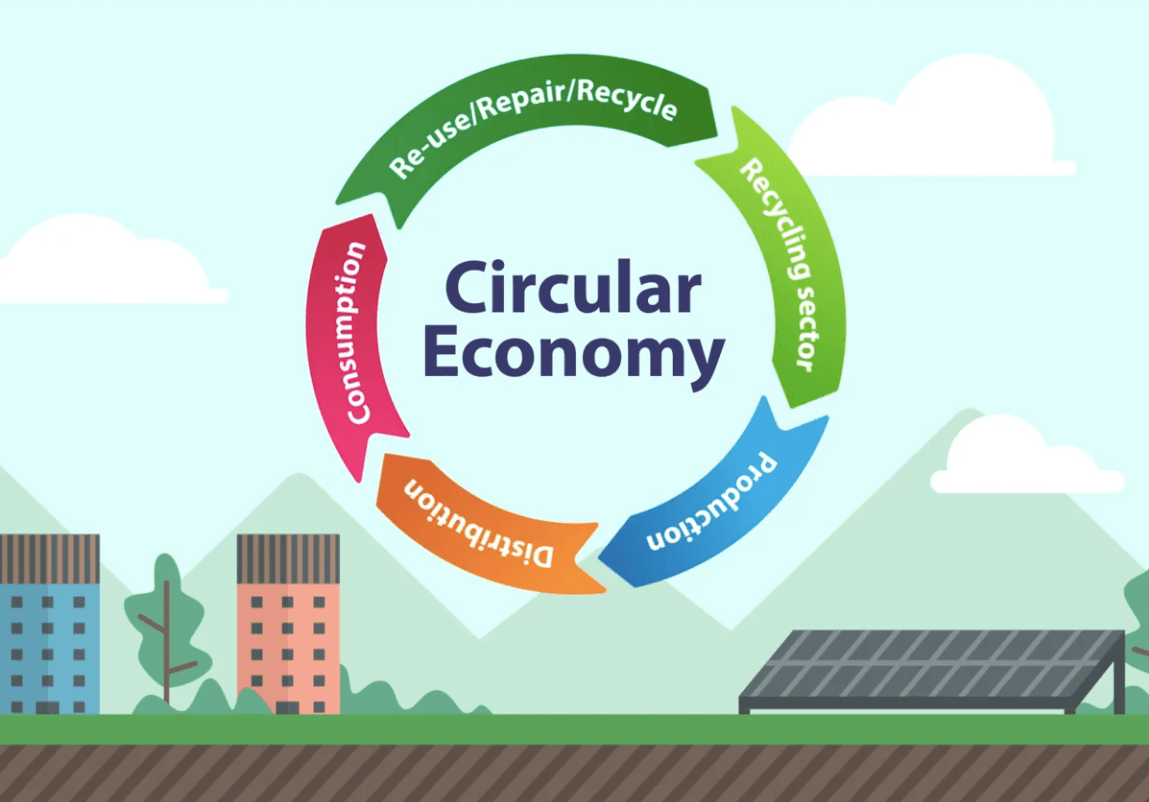Intro to the Planetary Boundaries & Why Business Should Care About Them
Introducing the Planetary Boundaries

Planetary boundaries refer to the critical limits of Earth's environmental systems that should not be surpassed if humanity wants to maintain a stable and safe operating space for the planet.
The concept of planetary boundaries was first proposed by a group of scientists led by Johan Rockström in 2009. Since then, it has gained widespread recognition as a framework for understanding and addressing the major environmental challenges that we face today.
The Nine Planetary Boundaries
There are nine planetary boundaries that have been identified so far, which are as follows:
- Climate change - The boundary for climate change is set at 350 parts per million (ppm) of carbon dioxide (CO2) in the atmosphere. As of 2021, the concentration of CO2 in the atmosphere is around 416 ppm.
- Biodiversity loss - The loss of biodiversity is a major concern, with scientists estimating that the Earth is currently experiencing a mass extinction event. The planetary boundary for biodiversity loss is set at a rate of 10 extinctions per million species per year.
- Ocean acidification - The acidity of the ocean has increased by around 30% since the Industrial Revolution, and the planetary boundary for ocean acidification is set at a pH level of 7.75.
- Stratospheric ozone depletion - The use of chlorofluorocarbons (CFCs) and other ozone-depleting substances has caused a thinning of the Earth's protective ozone layer. The planetary boundary for stratospheric ozone depletion is set at 276 Dobson units, which is the level before the appearance of the ozone hole.
- Nitrogen and phosphorus cycles - The excessive use of nitrogen and phosphorus in agriculture has caused eutrophication, which leads to the growth of harmful algae and dead zones in the oceans. The planetary boundary for these cycles is set at 35 million tonnes of nitrogen and 11 million tonnes of phosphorus per year.
- Land use change - The conversion of natural ecosystems into cropland, pasture, and urban areas has a significant impact on the environment. The planetary boundary for land use change is set at a rate of 15% of the Earth's land surface.
- Freshwater use - The excessive use of freshwater resources for agriculture, industry, and domestic purposes has led to water scarcity and depletion of aquifers. The planetary boundary for freshwater use is set at 4,000 km3 per year.
- Atmospheric aerosol loading - The release of particles into the atmosphere from human activities such as burning fossil fuels and biomass has an impact on climate and human health. The planetary boundary for atmospheric aerosol loading is set at a level of 35 Tg of aerosols per year.
- Chemical pollution - The release of chemicals into the environment has a significant impact on human health and the environment. The planetary boundary for chemical pollution is set at a level that does not cause adverse effects on the environment and human health.

Significance of Planetary Boundaries
The planetary boundaries framework provides a way of understanding the complex interactions between human activities and the environment. By identifying the critical thresholds beyond which the Earth's systems could become unstable, the planetary boundaries framework highlights the need for urgent action to address the major environmental challenges we face today.
The planetary boundaries concept is increasingly being used by governments, businesses, and organizations to guide decision-making and policy development. For example, the United Nations Sustainable Development Goals (SDGs) include targets that are closely aligned with the planetary boundaries framework.
Why are the Planetary Boundaries important for business?
Firstly, planetary boundaries represent a significant risk to business. The degradation of natural systems such as air, water, and soil can have severe consequences for companies that rely on these resources. For example, water scarcity can lead to a reduction in crop yields, which can affect the food and beverage industry. Similarly, climate change can cause supply chain disruptions due to extreme weather events, which can impact the transportation and logistics sectors. In addition, biodiversity loss can have far-reaching consequences for industries such as pharmaceuticals, which rely on natural compounds found in plants and animals. Therefore, businesses that fail to recognize and mitigate these risks may face significant financial losses in the long run.
Secondly, planetary boundaries represent an opportunity for business. Companies that operate within the limits of planetary boundaries can create competitive advantages by reducing their exposure to environmental risks and tapping into new markets for sustainable products and services. For example, companies that adopt renewable energy sources can reduce their dependence on fossil fuels, which not only reduces their carbon footprint but also creates cost savings. Similarly, companies that prioritize sustainable sourcing of raw materials can differentiate themselves from competitors and appeal to environmentally conscious consumers. Furthermore, businesses that develop innovative solutions to address environmental challenges can benefit from new revenue streams and partnerships with governments and NGOs.
Thirdly, planetary boundaries are becoming increasingly relevant to consumers and investors. As more people become aware of the environmental consequences of human activities, they are demanding that companies take responsibility for their environmental impacts. This is reflected in the rise of eco-labels, such as Fairtrade and Rainforest Alliance, which provide consumers with information about the environmental and social impacts of products. Similarly, investors are increasingly scrutinizing companies' environmental performance, and many are now integrating environmental, social, and governance (ESG) criteria into their investment decisions. Therefore, businesses that fail to address their environmental impacts risk losing customers and investors who are looking for sustainable and responsible companies to support.
Fourthly, planetary boundaries are becoming increasingly important from a regulatory perspective. Governments around the world are introducing policies and regulations to limit environmental impacts and encourage sustainable business practices. For example, the EU has introduced the Circular Economy Package, which aims to promote a more sustainable use of resources across the entire value chain. Similarly, the UK has set a target to reach net-zero greenhouse gas emissions by 2050, which has significant implications for businesses operating in the country. Therefore, companies that fail to comply with these regulations risk facing fines, reputational damage, and even legal action.
Finally, addressing planetary boundaries is essential for the long-term viability of businesses. As the world becomes more environmentally conscious, companies that fail to recognize and address their environmental impacts risk losing their license to operate. In addition, the consequences of exceeding planetary boundaries, such as climate change and biodiversity loss, could have severe consequences for the global economy as a whole. Therefore, businesses that take a proactive approach to addressing planetary boundaries are not only protecting their bottom line but also contributing to the long-term sustainability of the planet and society as a whole.
In conclusion, planetary boundaries represent a significant challenge and opportunity for business. Failing to recognize and mitigate the risks associated with exceeding these boundaries could result in significant financial losses, reputational damage, and regulatory sanctions. However, businesses that operate within the limits of planetary boundaries can create competitive advantages, tap into new markets, and contribute to planetary prosperity and wellbeing.










